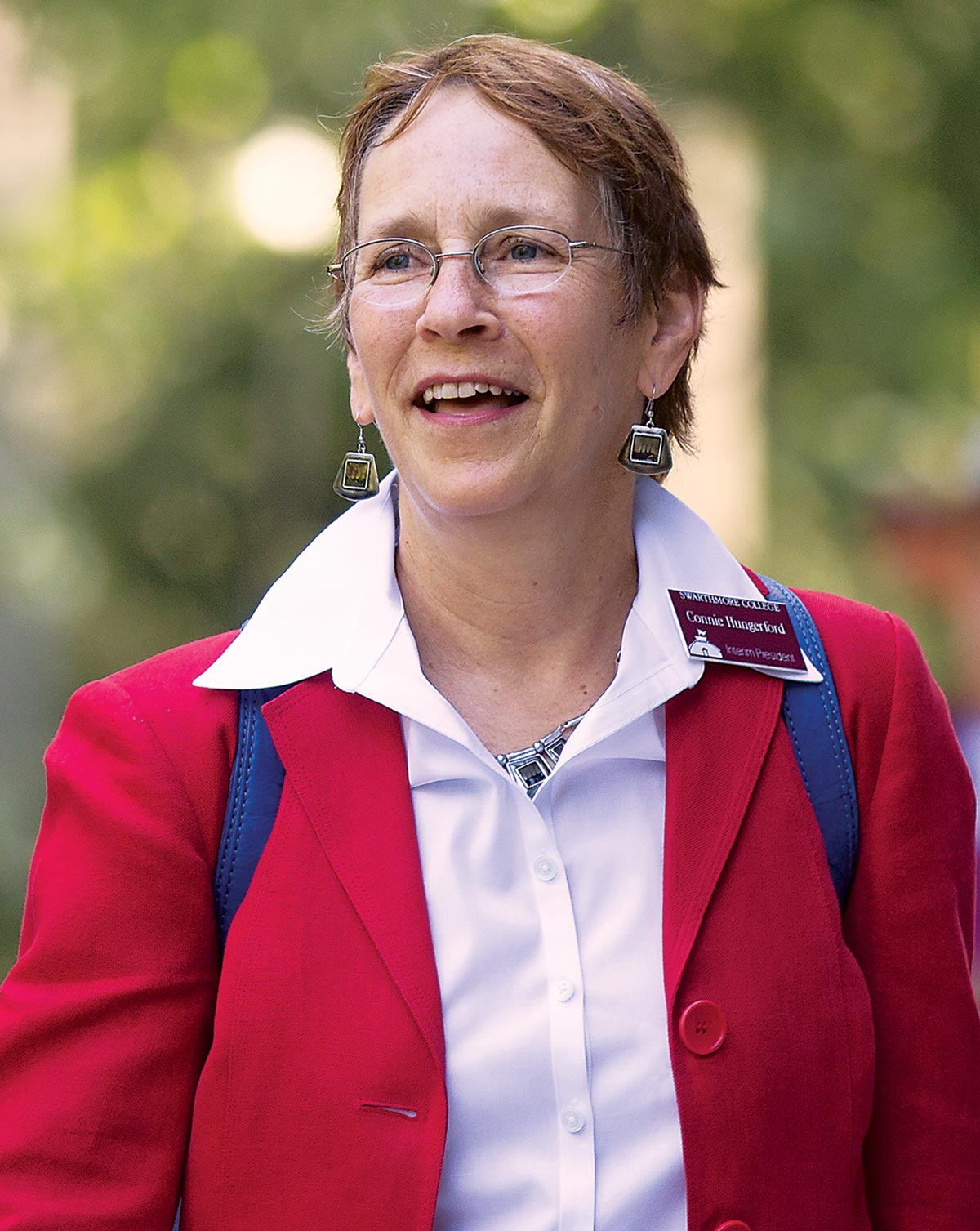She Led
by Example
This Spring, President Valerie Smith shared the sad news that Constance Cain Hungerford, the Mari S. Michener Professor Emerita of Art History and Provost Emerita, died May 12 after suffering a stroke. She was 73. With her passing, Swarthmore lost one of its most distinguished, influential, and beloved figures and one who served the College confidently as provost and interim president.
“Connie took her training and talents as an art historian and translated these gifts for detail, visuality, and context, cultivating the ability to see uniquely issues that faced the faculty and the College,” says Provost and Dean of the Faculty Sarah Willie-LeBreton.

Connie Hungerford served as interim president for the 2014–15 academic year. Never one to seek the spotlight, she was admired and respected by all.
“She always taught and led by example: imparting wisdom, embodying generosity, and modeling discernment,” says List Gallery Director Andrea Packard ’85, a former student.
Hungerford was the author of Ernest Meissonier: Master in His Genre (Cambridge University Press, 1999) in addition to numerous articles and chapters on the French painter. She curated a 1993 retrospective of his work for the Musée des Beaux-Arts in Lyon, France, and was a longtime consultant on Meissonier for Sotheby’s and Christie’s.
Hungerford was known for her equanimity, especially during difficult discussions among faculty colleagues, often deploying her wry humor to break the tension. In 2001, she became the College’s sixth provost. In her 10-year tenure, the longest of any to hold the position, Film and Media Studies expanded and Islamic Studies was established.
In recognition of Hungerford’s dedicated service as provost and for her outstanding contributions to Swarthmore’s educational program, Eugene Lang ’38, H’81 established a fund for faculty in her honor. The fund allows the provost to make grants to individual faculty members to support their professional and scholarly efforts.
In a moment of College transition, Hungerford took on her most significant College role: interim president for the 2014–15 academic year.
“Connie is best known for her thoughtful, highly collaborative leadership style, which will serve us very well in this transitional year,” then-Board of Managers Chair Gil Kemp ’72 said in announcing her appointment. “I know you will find her to be a steady, guiding, and imaginative influence.” Indeed, in reflecting on her long service, Kemp says: “Connie’s intelligence, scholarship, caring, and vision touched in many positive ways the lives of all members of the College community.”
Hungerford met her husband, Hans Oberdiek, at Swarthmore; an emeritus philosophy professor, he retired in 2014.
Hungerford was self-effacing and never one to seek the spotlight, so on the occasion of her retirement, the Art and Art History Department planned the only event that ensured her attendance: the re-dedication of the Hicks Murals in their new home in the Old Tarble Drawing Studio — something for which she had long advocated.
“[Hungerford’s] tenure at Swarthmore was extraordinary not just for her longevity as a scholar, administrator, and mentor to generations of students and colleagues alike, or the myriad ways she served the institution,” President Smith says. “It was remarkable also because of the way she served — with grace, humility, a deep reverence for the College’s mission, and genuine care for the individuals who comprise our community. I know I am not alone in finding it difficult to imagine Swarthmore without her.”
MORE: bit.ly/CHungerford